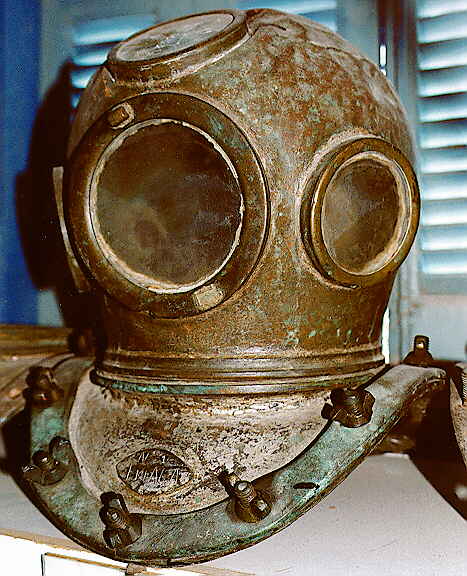
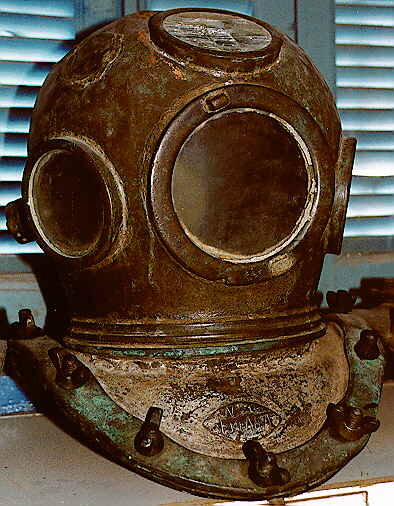
Our buddies Sandra Hendrikse and André Merks from The Netherlands went to Greece to look for the remains of the sponge diving industy. They came back with some fantastic material. We are very grateful, without their enthusiasm we would not have been able to add Greece to the virtual helmet collection.
Introduction
Sponge diving has been performed for centuries by the Greek people of the Dodecanesos islands. In the beginning naked divers went down holding a large marble stone of about 15 kilograms to take them to depths of 30 to 45 meters quickly. Of course they could only stay down for as long as their lungs allowed them to. The island Kalymnos was (and still is today) in the center of the sponge diving industry.Around 1865 a merchant from the island of Symi came round and introduced the first standard diving equipment (probably Siebe Gorman) to the divers. Now they could stay down much longer to look for sponges.
Xyth Pio
|
|
|
Here you see one
of the first helmets that was made by the people of Kalymnos island. All parts
of the standard diving equipment (or "Skafandro" as the Greeks call
it) was imitated after the Siebe Gorman example.
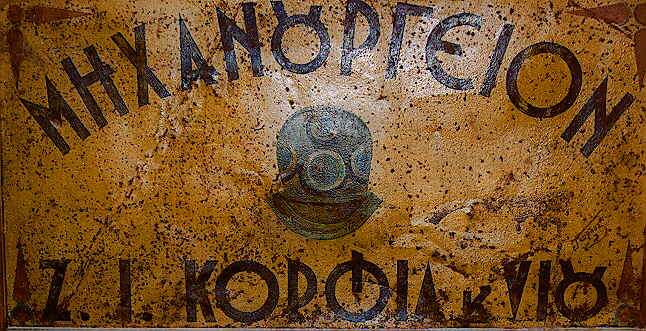
In the high days of the sponge
trade, made possible by the standard suit, Kalymnos had 6 wealthy merchants.
They had offices all over the world like England, Tunesia, Bahama's, Cuba and
America (Tarpon Springs Florida). Also, a large part of Pothia (the capital of
Kalymnos) was in their hands. They possesed the sponge factories, restaurants,
bars and also the "Xyth Pio" factory that produced the diving
helmets. The picture above shows the original sign-board of the factory.
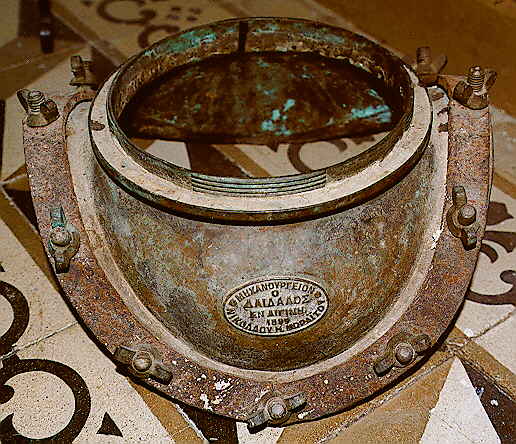
A 12 bolt corselet from the "Xyth Pio"
factory dated 1899
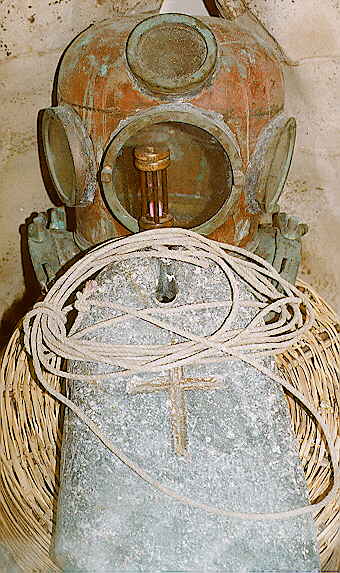
Picture of an
original stone used by the early "skin divers" known as the Skandalopetra.
Notice the small
hour-glass in the middle.
You will learn more about that in the sponge
diving section.
The helmet is probably made on Kalymnos and is dated 1873.
It is part of the private collection of the brothers Stravos and Dimitris Valsamidis
from Vlihadia, Kalymnos.
|
|
|
A different Greek sponge divers helmet from a later date. It looks a lot like the first one. Alle materials were made on the island, except the suits. They were bought from other producers. DESCO suits were used a lot in Greece.
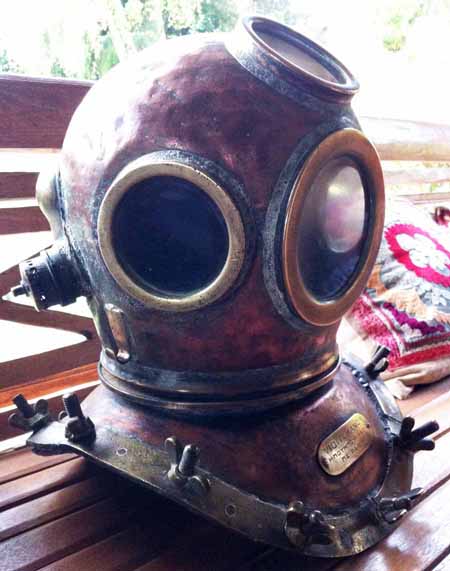 |
| A Greek
Sponge hat showing typical features. Notice the low profile front window
and the thick but skill fully made soldered joint between the window frames and the copper bonnet. Typically the glass in the widows is not protected from impact as there was less risk from the surroundings of such an impact. |
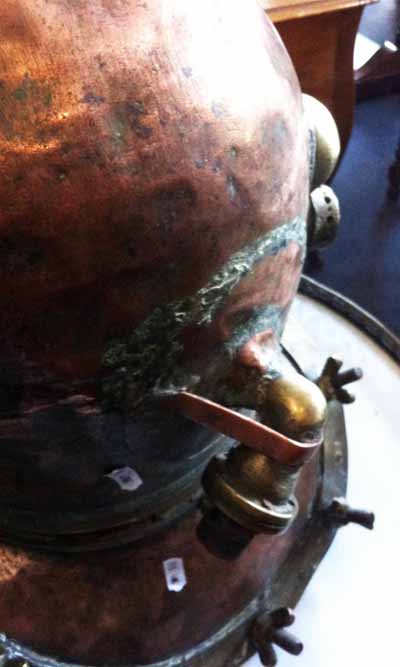 |
| Rear view
of the helmet showing the typically heavily soldered air inlet gooseneck
and the support to the elbow. Support of this design are common on
Sponge Diver's hats.. |
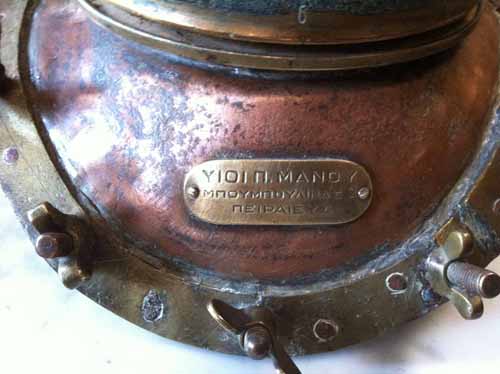 |
| Front
view of the corselet showing the maker’s badge.
P. Manou & Sons Photos courtesy of Jean-Luc Cerjak
Pictures by Diving Heritage. |
Learn all about this subject in the sponge diving section
Last update: 7th December 2012